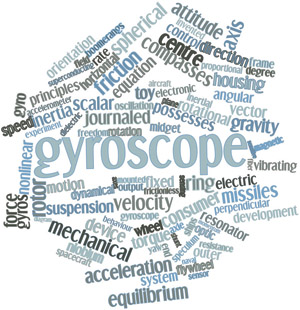 Check out some of the recent mobile devices, like last year’s iPhone 5S or Galaxy S4, and you will see several new features in them. Any person who has not kept up with technology over the past decade will find these to be magical, and with good reason. Almost all modern ‘smart’ electronic devices around us have accelerometers or gyroscopes, or even both together. Together these enable functionality in devices that make them seem magical to a lay user.
Check out some of the recent mobile devices, like last year’s iPhone 5S or Galaxy S4, and you will see several new features in them. Any person who has not kept up with technology over the past decade will find these to be magical, and with good reason. Almost all modern ‘smart’ electronic devices around us have accelerometers or gyroscopes, or even both together. Together these enable functionality in devices that make them seem magical to a lay user.
If you are a regular reader of this section, you should be now somewhat familiar with sensors and their functions. However, just to provide a small insight, a sensor is a component or a device that either detects or measures any physical property and indicates, records or responds to it. There are a number of sensors in the market today; however, motion sensors are the ones that are most widely used in applications for their better performance. they detect and measure different types of motions of a device that may further be used as an input to the control system for that particular device. We all are aware of the different types of motions like vibration, rotation, acceleration, etc. All these motion types have a special type of sensor for their detection, like accelerometers are used for the detection of acceleration with a free-fall reference, and gyroscopes are used to detect the orientation of the device directly.
Together, an accelerometer and a gyroscope can provide enough data to detect motion on six axes—up and down, left and right, forward and backward, and roll, pitch and yaw rotations.
What are they?
An accelerometer is a type of sensor that senses the velocity and the motion of a reference mass to track its orientation and movement. It is an electromechanical device that can help a gadget understand its surroundings in a better way.
On the other hand, a gyroscope is a type of sensor that is used to measure and maintain the orientation of a device or of a reference object using the principle of angular velocity. It is another type of motion sensor. It is usually referred to as a ‘gyro’ or an ‘angular velocity sensor’ or an ‘angular rate sensor.’ The angular velocity sensed by the sensor is converted into an electrical signal.
Says T. Anand, promoter and managing director of Knewron, “There are a couple of applications where we have deployed accelerometers. One such application is a security device that is mounted and should remain stationary under normal conditions. However, in case someone tries to tamper with it, even slightest movement or vibration would be sensed and the device would come into action. Another application is for special-purpose objects that would be deployed in events, and these objects would sense movement or activity done by the user. Depending upon the activity, user updates would be registered on his social profiles.”
Parameters to select an accelerometer and a gyroscope
Each component or a device has some parameters based on which it is selected. Now identification of those parameters becomes difficult when there are ‘n’ number of similar products in the market, highlighting different parameters. Following is the list that would help us identify the correct parameters to select an accelerometer:
1. Analogue/digital output. An accelerometer with an analogue output provides a continuous voltage that is proportional to the acceleration, whereas in an accelerometer with digital output, the amount of time is high and will be proportional to the amount of acceleration.
2. Dynamic range. It is the maximum amplitude measured by an accelerometer before it distorts or clips the output signal. It is specified in g’s.
3. Sensitivity. It is the scale factor of a sensor that is measured in terms of change in output signal for every change in the input measured. It is measured in mV/gm.







All the aspects of the two star sensors have been covered comprehensively and in-depth. Very appreciable.
Thank you for your valuable comment.